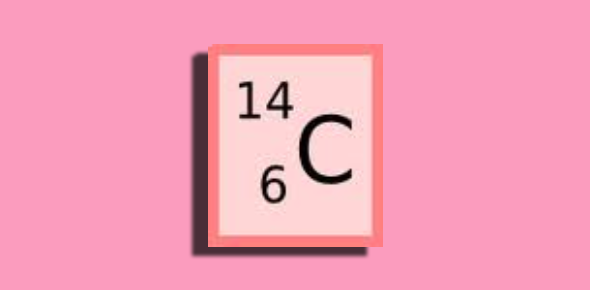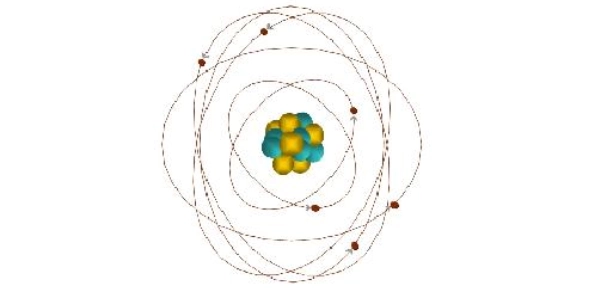Chemistry Quiz: Atomic Structure & Atomic Mass Calculations

Welcome to the Chemistry Quiz: Atomic Structure & Atomic Mass Calculations! This quiz delves into the fundamental aspects of atomic science, exploring the intricate world of atoms and their properties. Test your knowledge on atomic structure, electron configuration, and the periodic table, as well as your proficiency in calculating atomic masses.
Prepare to unravel the mysteries of subatomic particles, electron orbits, and the periodic trends that govern the behavior of elements. Challenge yourself with questions that cover the composition of atoms, isotopes, and the principles behind atomic mass calculations. Whether you're a seasoned chemistry enthusiast or a budding scientist, this Read morequiz offers an engaging opportunity to assess your comprehension of the building blocks of matter.
Sharpen your understanding of atomic intricacies and emerge with a deeper appreciation for the fascinating world of atomic structure. Get ready to explore the atomic realm and showcase your chemistry prowess in this stimulating quiz!
- 1.
An atom that has 8 protons, 8 neutrons, and 7 electrons would be considered an oxygen ion.
- A.
True
- B.
False
Correct Answer
A. TrueExplanation
An oxygen atom typically has 8 protons, 8 neutrons, and 8 electrons. However, in this case, there are only 7 electrons, which means that one electron is missing. When an atom gains or loses electrons, it becomes an ion. In this case, since the atom has gained an extra electron, it would be considered an oxygen ion. Therefore, the statement "An atom that has 8 protons, 8 neutrons, and 7 electrons would be considered an oxygen ion" is true.Rate this question:
-
- 2.
An atom with 9 protons, 10 neutrons, and 9 electrons would be considered an isotope of fluorine.
- A.
True
- B.
False
Correct Answer
B. FalseExplanation
An atom with 9 protons, 10 neutrons, and 9 electrons would not be considered an isotope of fluorine. The atomic number of fluorine is 9, which represents the number of protons in its nucleus. Therefore, any atom with 9 protons would be considered fluorine. However, the number of neutrons in an atom can vary, resulting in different isotopes of the same element. In this case, the atom has 10 neutrons, which is not a characteristic of any known fluorine isotope. Therefore, the statement is false.Rate this question:
-
- 3.
An atom that contains a different number of neutrons than the normally occurring version is called a(n)
- A.
Atom
- B.
Molecule
- C.
Ion
- D.
Isotope
Correct Answer
D. IsotopeExplanation
An atom that contains a different number of neutrons than the normally occurring version is called an isotope. Isotopes are atoms of the same element that have different numbers of neutrons, resulting in different atomic masses. These variations in neutron numbers do not affect the element's chemical properties but can affect its stability and nuclear properties. Isotopes can be used in various applications, such as radiometric dating and medical imaging.Rate this question:
-
- 4.
Which type of subatomic particle has a positive charge?
- A.
Proton
- B.
Neutron
- C.
Electron
Correct Answer
A. ProtonExplanation
Protons are subatomic particles that carry a positive charge. They are found in the nucleus of an atom, along with neutrons, which have no charge. Electrons, on the other hand, are negatively charged and orbit around the nucleus. Therefore, the correct answer is proton.Rate this question:
-
- 5.
Which type of subatomic particle has a negative charge?
- A.
Proton
- B.
Neutron
- C.
Electron
Correct Answer
C. ElectronExplanation
Electrons are subatomic particles that carry a negative charge. They are found outside the nucleus of an atom and are responsible for the flow of electricity. Protons, on the other hand, carry a positive charge, and neutrons have no charge. Therefore, the correct answer is electron.Rate this question:
-
- 6.
Which type of subatomic particle has no charge, meaning it is neutral?
- A.
Proton
- B.
Neutron
- C.
Electron
Correct Answer
B. NeutronExplanation
A neutron is a subatomic particle that has no charge, meaning it is neutral. Unlike protons, which have a positive charge, and electrons, which have a negative charge, neutrons have a mass similar to that of a proton but do not carry any charge. This makes them an essential component of an atom's nucleus, along with protons, while electrons orbit around the nucleus. Neutrons play a crucial role in determining the stability and properties of an atom.Rate this question:
-
- 7.
Which subatomic particle determines the identity of an atom? In other words, all atoms of one element will always have the same number of these.
- A.
Proton
- B.
Neutron
- C.
Electron
Correct Answer
A. ProtonExplanation
The proton is the subatomic particle that determines the identity of an atom. This is because all atoms of one element will always have the same number of protons. Protons carry a positive charge and are located in the nucleus of an atom. The number of protons in an atom is what defines its atomic number and determines its place on the periodic table. Therefore, the correct answer is proton.Rate this question:
-
- 8.
Ga-69 has a mass of 68.926 amu and an abundance of 60.10%. Ga-71 has a mass of 70.925 amu and an abundance of 39.90%. What is the weighted average atomic mass of galium? (Type only a numeric answer. Do not include units.)
Correct Answer
69.7
69.72
69.724
69.7236
69.72360
69.723601Explanation
The weighted average atomic mass of gallium can be calculated by multiplying the mass of each isotope by its abundance, and then summing these values. For Ga-69, the calculation is (68.926 amu * 0.6010) = 41.427826 amu. For Ga-71, the calculation is (70.925 amu * 0.3990) = 28.285275 amu. Adding these values together gives a total of 69.713101 amu, which can be rounded to 69.7.Rate this question:
- 9.
Cl-35 has a mass of 34.969 amu and a relative abundance of 75.7%. Cl-37 has a mass of 36.965 amu and a relative abundance of 24.3%. What is the weighted average atomic mass of chlorine? (Type only a numeric answer. Do not include units.)
Correct Answer
35.5
35.45
35.454
35.4540
35.45403
35.454028Explanation
The weighted average atomic mass of chlorine is calculated by multiplying the mass of each isotope by its relative abundance, and then summing these values. In this case, we have two isotopes of chlorine: Cl-35 and Cl-37. Cl-35 has a mass of 34.969 amu and a relative abundance of 75.7%, while Cl-37 has a mass of 36.965 amu and a relative abundance of 24.3%. To calculate the weighted average atomic mass, we multiply the mass of Cl-35 by its relative abundance and the mass of Cl-37 by its relative abundance, and then sum these values. The result is 35.5 amu, which is the weighted average atomic mass of chlorine.Rate this question:
- 10.
Ag-107 has a mass of 106.905 amu and an abundance of 51.84%. Ag-109 has a mass of 108.905 and an abundance of 48.16%. What is the weighted average atomic mass of silver? (Type only a numeric answer. Do not include units.)
Correct Answer
107.9
107.87
107.868
107.8682Explanation
The weighted average atomic mass of silver is calculated by multiplying the mass of each isotope by its abundance, then summing these values. In this case, the mass of Ag-107 (106.905 amu) is multiplied by its abundance (51.84%) and the mass of Ag-109 (108.905 amu) is multiplied by its abundance (48.16%). Adding these two values gives the weighted average atomic mass of silver as 107.8682 amu. Therefore, the correct answer is 107.8682.Rate this question:
- 11.
Which particle(s) are found in the nucleus?
- A.
Proton
- B.
Neutron
- C.
Electron
Correct Answer(s)
A. Proton
B. NeutronExplanation
Protons and neutrons are the particles found in the nucleus of an atom. Protons have a positive charge, while neutrons have no charge. Electrons, on the other hand, are found in the electron cloud surrounding the nucleus. Therefore, the correct answer is Proton, Neutron.Rate this question:
-
- 12.
Which particle(s) are located outside the nucleus?
- A.
Proton
- B.
Neutron
- C.
Electron
Correct Answer
C. ElectronExplanation
Electrons are located outside the nucleus of an atom. Protons and neutrons are located inside the nucleus. Electrons are negatively charged particles that orbit the nucleus in specific energy levels or shells. They are much smaller and lighter than protons and neutrons. The arrangement of electrons in an atom determines its chemical properties and reactivity.Rate this question:
-
- 13.
The diagram below represents carbon-14. What is the mass number of carbon-14?
- A.
6
- B.
14
- C.
8
- D.
20
Correct Answer
B. 14Explanation
Carbon-14 is represented by the number 14 in the diagram, which corresponds to its mass number. The mass number of an atom is the sum of its protons and neutrons, and carbon-14 has 6 protons and 8 neutrons, giving it a mass number of 14.Rate this question:
-
- 14.
The diagram below represents carbon-14. What is the atomic number of carbon-14?
- A.
6
- B.
14
- C.
8
- D.
20
Correct Answer
A. 6Explanation
The atomic number of an element represents the number of protons in its nucleus. In the case of carbon-14, the element is carbon, which has an atomic number of 6. Therefore, the correct answer is 6.Rate this question:
-
- 15.
The diagram below represents carbon-14. How many neutrons are in an atom of carbon-14?
- A.
6
- B.
14
- C.
8
- D.
20
Correct Answer
C. 8Explanation
Carbon-14 is a specific isotope of carbon, which means it has a different number of neutrons compared to the most common form of carbon (carbon-12). The atomic number of carbon is 6, which represents the number of protons in the nucleus. The atomic mass of carbon-14 is 14, which represents the total number of protons and neutrons in the nucleus. Therefore, to determine the number of neutrons in carbon-14, we subtract the atomic number from the atomic mass: 14 - 6 = 8. Hence, there are 8 neutrons in an atom of carbon-14.Rate this question:
-
- 16.
An atom that contains an unequal number of protons and electrons is called a(n)
- A.
Atom
- B.
Molecule
- C.
Isotope
- D.
Ion
Correct Answer
D. IonExplanation
An atom that contains an unequal number of protons and electrons is called an ion. Ions are formed when an atom gains or loses electrons, resulting in a net positive or negative charge. This imbalance in the number of protons and electrons gives ions distinctive chemical properties and allows them to participate in chemical reactions.Rate this question:
-
- 17.
In the diagram below, what color represents the electrons?
- A.
Blue
- B.
Yellow
- C.
Red
- D.
They are not represented.
Correct Answer
C. RedExplanation
The diagram does not represent the electrons because they are not shown. The color red is not used to represent the electrons in the diagram.Rate this question:
-
Quiz Review Timeline +
Our quizzes are rigorously reviewed, monitored and continuously updated by our expert board to maintain accuracy, relevance, and timeliness.
-
Current Version
-
Dec 27, 2023Quiz Edited by
ProProfs Editorial Team -
Aug 26, 2013Quiz Created by
Whol_jspitler




.webp)
.webp)
